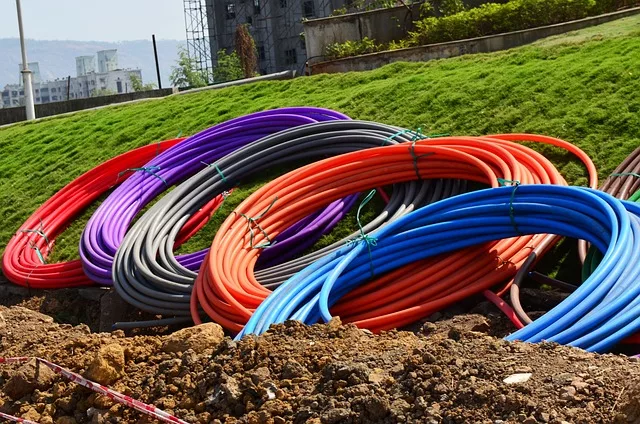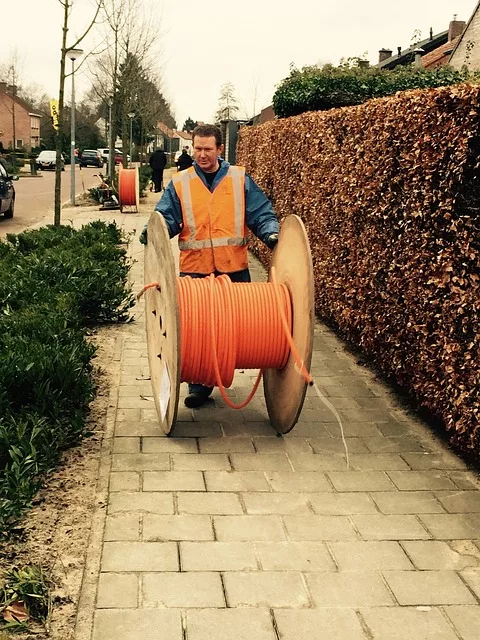FTTH stands for “Fiber to the Home.” It is a type of broadband internet connection that uses optical fiber to transmit data directly to a user’s home or business, as opposed to traditional copper or coaxial cables. This allows for faster and more reliable internet speeds than other types of connections. FTTH is considered the most advanced and future-proof technology for internet connectivity.
Steps to install FTTH
The steps to install FTTH (Fiber to the Home) will vary depending on the specific service provider and location. However, a general overview of the process is as follows:
- Check Eligibility: Contact the service provider to check if your home or business is eligible for FTTH service. This will depend on whether the service provider has already laid the necessary fiber optic cables in your area.
- Schedule an Installation Appointment: Once you have confirmed that your location is eligible, you’ll need to schedule an appointment for the installation. The service provider will send a technician to your home or business to complete the installation.
- Outside Installation: The technician will begin by installing the fiber optic cable from the street to the outside of your home or business. This includes running the cable through underground conduit or overhead lines.
- Inside Installation: Next, the technician will run the fiber optic cable from the outside to the inside of your home or business. This will involve running the cable through walls, ceilings, and floors, as well as installing a fiber optic modem and other necessary equipment.
- Activation: Once the installation is complete, the technician will activate the service and test the connection to ensure that it is working properly.
- User Configuration: You will be shown how to set up and configure the router and other devices to connect to the internet via the fiber optic connection.
It’s worth mentioning that some providers might have their own variations of the steps, and also the process could have some variations depending on the type of building and existing infrastructure.
What advantages of FTTH service?
Fiber to the Home (FTTH) service has several advantages over traditional broadband internet connections, such as:

- High Speed: FTTH provides much faster internet speeds than other types of connections, such as DSL or cable. This allows for more efficient streaming, downloading, and uploading of large files.
- Reliability: Fiber optic cables are less prone to interference and signal degradation, which means that FTTH service is more reliable than other types of connections.
- Scalability: FTTH can support much higher bandwidth than other types of connections, making it easier to scale up and add new services as needed.
- Future-proofing: Fiber optic cables have a much longer lifespan than other types of cables, which means that FTTH service is more future-proof and less likely to need upgrades or replacements in the future.
- Distance-Independent: Copper and coaxial cables have a limited distance that they can transmit data over, with signal degradation starting at a certain distance, FTTH does not have this limitation as it can transmit data over longer distances with minimal loss.
- Quality of Service: FTTH can provide a higher quality of service compared to other types of connections, as it allows for more precise control of the data being transmitted.
- Security: FTTH networks are less vulnerable to security breaches and hacking attempts than other types of connections.
- Cost-effective: In the long run, the investment of FTTH is cost-effective as it has a longer lifespan and can support more services, which means less maintenance and replacement costs.
Disadvantages of FTTH
While Fiber to the Home (FTTH) service has many advantages, there are also some disadvantages to consider:
- High Initial Cost: Installing FTTH can be expensive, especially if the service provider needs to lay new fiber optic cables to your home or business. This high initial cost may be a barrier for some people, especially in areas where the existing infrastructure is not conducive to FTTH installation.
- Limited Availability: FTTH service is not yet available in all areas, so it may not be an option for everyone.
- Requires Fiber-ready devices: Some devices such as old routers, modems, and other networking equipment may not be compatible with FTTH service, and may need to be replaced.
- Installation Time: Installing FTTH can take longer than other types of connections, as it involves laying new fiber optic cables and running them to the inside of your home or business.
- Maintenance: FTTH networks require specialized equipment and expertise to maintain, which can be more difficult and expensive than other types of connections.
- Power Outage: In the event of a power outage, FTTH service may be affected as the optical network terminals (ONTs) that convert the optical signal to an electrical one, require power to function.
- Weather Dependent: FTTH networks can be affected by extreme weather conditions, such as heavy rain, snow, or ice, which can damage the optical cables and cause outages.
- Limited Competition: In some areas, there may be only one or a few service providers that offer FTTH services, which can limit competition and lead to higher prices.
It’s worth noting that these disadvantages might vary depending on the location, provider, and type of building. Additionally, the advantages of FTTH service often outweigh the disadvantages, making it a great option for those who can access it.




